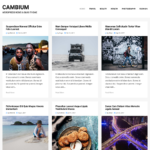In web design, the Footer often needs to be addressed despite its significance in enhancing user experience and providing crucial information to visitors. The Footer at the bottom of a webpage is a prime location for vital details and elements that can significantly benefit users and website owners. Often overlooked, a well-crafted footer can dramatically contribute to a website’s usability, credibility, and overall aesthetic appeal.
When considering the elements that make up a comprehensive and engaging website, the importance of a well-designed footer cannot be overlooked. The best website design company understands that a footer is not just a conclusion but a significant part of the overall user experience. A thoughtfully crafted footer enhances navigation, provides essential information, and reinforces brand identity. It should include quick links to key pages, contact details, social media icons, and a brief about the company.

Here are the must-have elements for every website footer:
Navigation Links
The Footer is a secondary navigation area that lets users quickly access essential pages such as About Us, Contact, Services, FAQ, Blog, or Site Map. Users can easily find relevant information by including these links, especially if they have scrolled down to the bottom of the page. This feature enhances user experience and provides efficient website navigation.
Contact Information
Contact details like address, email, phone number, and a contact form can boost credibility and trustworthiness. Users may seek this information for inquiries, feedback, or to engage in business transactions, making it essential for businesses to display their contact information prominently in the Footer.
Social Media Icons
In today’s interconnected world, social media presence is vital. Including social media icons in the Footer allows visitors to connect with the website on various platforms. These icons can link to the website’s profiles on platforms like Facebook, Twitter, Instagram, LinkedIn, and more, enhancing engagement and expanding the website’s reach.
Copyright Information
Displaying copyright details not only protects your content but also demonstrates professionalism. It typically includes the copyright symbol, the website name, and the year. This simple addition indicates that the content on the website is protected and reinforces the website’s authenticity.
Privacy Policy and Terms of Service
It is crucial to include links to the website’s privacy policy and terms of service for compliance and transparency. Users value knowing how a website uses their data, and these legal documents help inform them about their rights and responsibilities while using the website.
Newsletter Signup or Subscription Form
Encouraging visitors to subscribe to newsletters or updates helps build a subscriber base for future engagement. Placing a subscription form in the Footer allows interested users to quickly sign up without interrupting their browsing experience.
Back to Top Button
Especially useful for lengthy pages, a back-to-top button in the Footer enables users to return to the top with a single click, enhancing navigation convenience.
Accessibility and Compliance Links
In adherence to accessibility standards, including links to accessibility statements or compliance certifications indicates a commitment to inclusivity and compliance with relevant guidelines (e.g., WCAG for accessibility).
Site Map or Additional Navigation
For complex websites or online stores, a sitemap or additional navigation links in the Footer can assist users in exploring the website comprehensively, aiding in better navigation and discovery of content.
Design and Branding Elements
The website’s Footer should maintain a cohesive look with the brand’s visual identity by using its color scheme, typography, and logo.
In conclusion, the website footer is an integral part of web design. By incorporating these essential elements into the Footer, web designers can enhance user experience, bolster credibility, and facilitate easy navigation, ultimately contributing to the success of the website and the satisfaction of its visitors.



